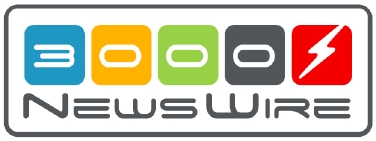 |
 |
|
|
|
September 2005
Louisiana teachers retirement system retires its 3000
Doug Smith has finished transitioning a collection of e3000 applications for the Teachers Retirement System of Louisiana (www.trsl.org). The transition project began in February 2004 and finished just eight months later in October of the same year.
TRSL began developing their applications in COBOL in 1980, using an HP 3000 Series III with IMAGE. The seeds of TRSL’s quick transition were planted in the early 1990s, when they began migrating the COBOL code to a fourth generation language: Speedware. In 2004, they began working with Speedware to migrate their code and data from their HP e3000 979/200 to a cluster of Itanium-based HP rx5670 Integrity servers running HP-UX 11i with HP Serviceguard and Oracle.
The fact that TRSL’s applications had been re-written in a 4GL was key to a smooth transition that went relatively quickly. But the fact that the entire project was carefully managed and implemented by people with experience in doing e3000 transitions had at least as much to do with it.
TRSL decided to move from COBOL to Speedware long before HP announced an end to the e3000 platform. Smith says, “The move to Speedware was motivated by a need to develop applications more rapidly than we could do in COBOL, and a desire to move to client/server. It was easier to do those things in a 4GL than it was in COBOL.” The transition to the 4GL was done gradually, one module at a time, with the cost spread out over several years.
Smith says “Transitioning to a 4GL ‘one bite at a time’ was a lot easier than having to ‘eat the whole meal’ all at once.”
When HP announced an end to e3000 support in 2001, TRSL began looking seriously at what it would take to move their 4GL applications to UNIX. Their Speedware code’s portability, which had been a minor consideration up until now, suddenly became paramount. TRSL found that the migration of the Speedware programs, while far easier than COBOL would have been, would not be trivial. “For example, we had MPE commands embedded in our Speedware code, and those had to be changed.”
Smith said his biggest concern was not for the migration of code or data. It was for his employees.
“All their experience was in MPE and I was worried about whether or not they were going to be able to learn the skills they would need to do their jobs with the new UNIX system.” But after two weeks worth of training that was conducted by HP and Speedware, Smith says, “My staff took to UNIX like a second skin. They just took over.”
In the end, the most time consuming parts of the transition project turned out to be the migration of the data, and the testing of the new environment. Smith says, “There was some logic that had to be changed because of the differences between IMAGE and Oracle. But we were finished with it by the end of September. During the month of October, we ran both systems in parallel, to shake out any bugs that might have gotten introduced during the migration.”
The month of parallel testing paid off. Smith says. “We had the smoothest cutover I’ve ever experienced. We backed up all our production data on Thursday night, and started converting it for the new environment on Friday morning, with the intent of working over the weekend so it would be ready for the users on Monday. Instead, the staff was able to go to the LSU game on Saturday afternoon. That’s how smoothly it went.”
Licensed under the Creative Commons License.![]()